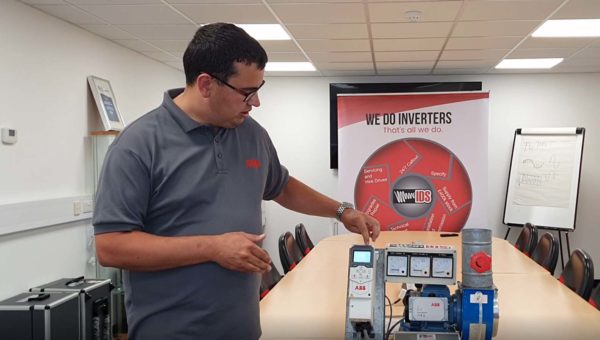PID Control
In this video, George Dodwell from ABB demonstrates PID Control.
Using our demo rig, which comprises of an inverter, a fan, a damper and a pressure control point. The pressure is fairly crucial to this demonstration.
George explains that PID Control is the principle of using an inverter to control the speed of an application. An example would be, if you stay overnight in a hotel, take a shower in the morning at the same time as everyone else, PID control is what keeps your shower at a constant pressure. Imagine that the hotel has 100 rooms with 100 people all having a shower at once, you will have to have a pump to speed up the pressure of the water up to cope with the demand. That is all done with PID. When the flow demand comes on, the inverter will speed up to match that level of flow. When the demand drops off, the inverter will slow the pump down. Which happily creates a bit of an energy saving as well.
PID Control Demonstration
In order to demonstrate this, George has an inverter set in PID mode, with a set point of 9.9 Pascals. George turns the demo rig on and monitors the speed as he opens and closes the damper.
To begin, George has got the inverter running at about 30 Hertz to meet the 9.9 Pascals. George opens the damper to simulate an increase in demand (like lots of people taking a shower at the same time), at which point you see the inverter speed up to match the required flow. The damper is fully open and we can see in the video the inverter is running at a high speed.
When George closes the damper to simulate a reduction in demand, the inverter then slows the pump down. And that is PID Control.
If you would like to discuss PID Control and how it can be applied to your applications please contact us on 0115 944 1036 or email [email protected] and our engineers will be happy to help.

